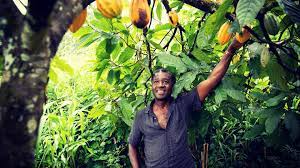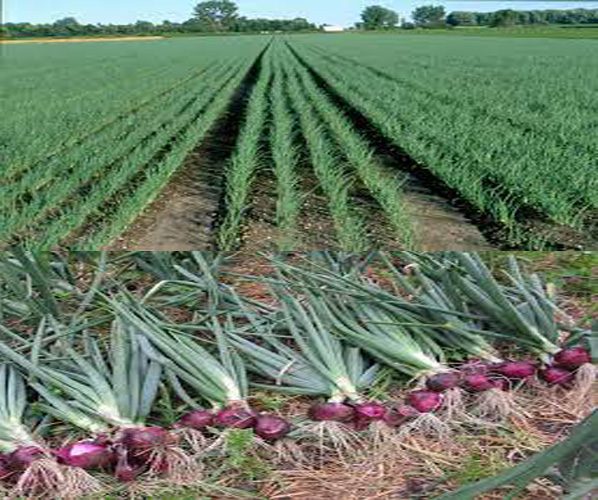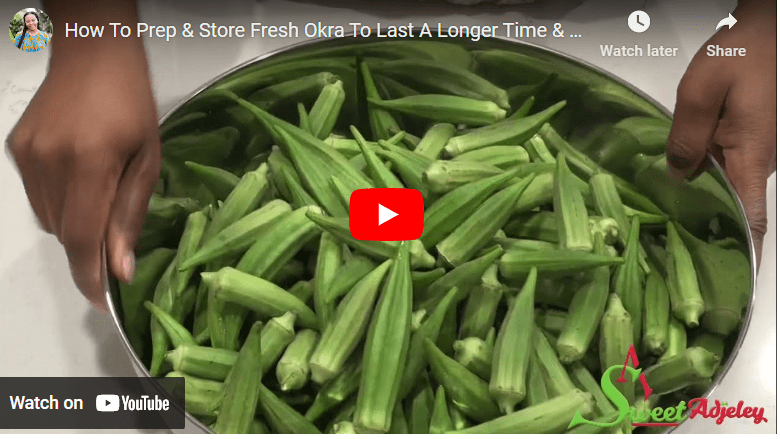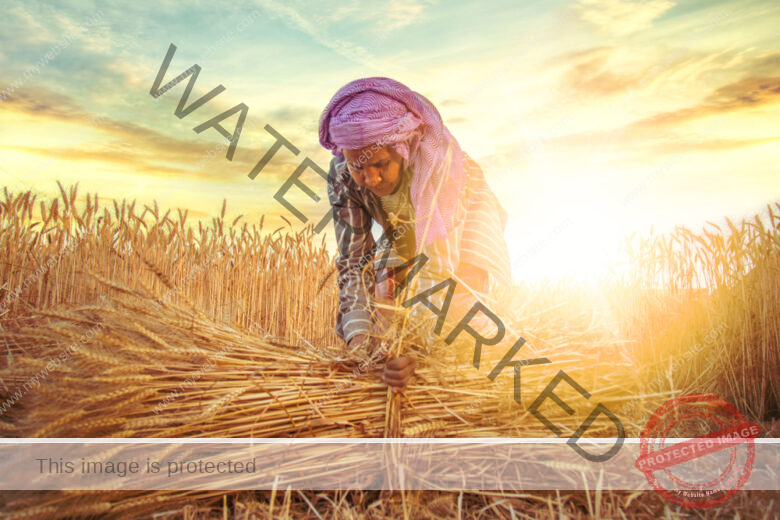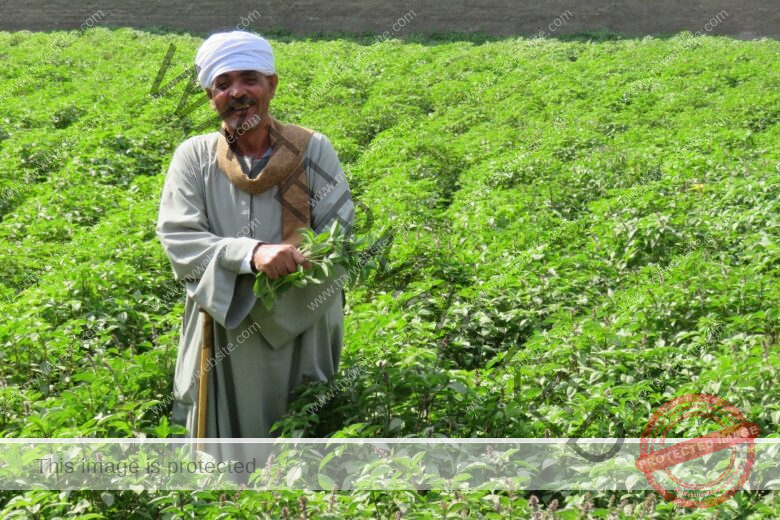Cocoa is one of the most important crops in Ghana, accounting for nearly one-third of the country’s total agricultural exports. Ghana is among the largest producer of cocoa beans in the world.
Growing cocoa in Ghana will require you to choose the perfect location, acquire cocoa variety, prepare the planting site, planting time, plant the cocoa, fertilizer application, water, pruning, weed control, and harvesting.
Growing cocoa in Ghana is a lucrative business, and it can be a great source of income for you. Therefore, to enjoy the maximum benefit of cocoa, we have compiled the steps you need to follow from beginning to end.
How To Grow Cocoa In Ghana
Growing cocoa in Ghana is a rewarding endeavor that can provide a steady income and a source of pride for the farmer. To ensure success, it is important to understand the basics of cocoa farming by following the steps outlined and discussed in this guide.
Step 1. Choosing the Location
As Ghana is one of the world’s leading cocoa producers, choosing a location to grow cocoa has become an important decision for many farmers. When selecting a location, you must consider factors such as soil fertility, climate, access to markets, and others.
Read Also: [Beginners Guide] How To Grow Coconut In Ghana
Soil fertility is a key factor in determining a suitable location for growing cocoa. Cocoa requires soil with a high level of organic matter, adequate drainage, and a neutral pH. Additionally, the soil must have enough available nutrition for the cocoa plants to thrive. The soil should be well-drained, fertile, and rich in organic matter.
Climate is also important when selecting a location for growing cocoa. Cocoa can grow in tropical climates with average temperatures between 20 and 30 degrees Celsius. Additionally, the plants require an average rainfall of at least 1500 mm per year.
Step 2. Acquire Cocoa Variety
When selecting cocoa seedlings to plant, it is important to consider the quality of the seedlings. The best seedlings are those that are healthy, vigorous, and free of pests and diseases.
It is also important to assess the seedling’s potential for producing a high-yielding crop. Factors such as the variety of the seedling, its ideal growing conditions, and the surrounding environment should also be taken into account.
Read Also: [Beginners Guide] How To Grow Okra In Ghana
When purchasing cocoa varieties, you can purchase from local cocoa farmers, international cocoa companies, and research organizations and universities.
Step 3. Prepare Planting Site
To prepare the planting site, you should test the soil to determine its nutrient content and pH level. Add organic matter to improve the soil’s water-holding capacity and nutrient content. Till the soil to a depth of at least 12 inches to promote root growth.
Step 4. Planting Time
The ideal time for planting cocoa is during the wet season, which typically runs from May to October. During this time, the soil is moist and ideal for planting.
Read Also: [Beginners Guide] How To Grow Apple in Ghana
Step 5. Planting the Cocoa Trees
Cocoa trees should be planted at least six feet apart, in rows, to ensure they get enough sunlight and nutrients. It is important to select the right variety of cocoa trees for the region, as some varieties may not do well in the climate and soil.
Step 6. Fertilizing and Watering
Cocoa trees need regular fertilization and water to produce the best results. It is important to fertilize the soil and water the trees regularly, but not to over-water them, as this can lead to disease.
Read Also: [Beginners Guide] How to Grow Vegetables in Ghana
Step 7. Pruning
Pruning is an important part of cocoa farming. Pruning the trees helps to ensure that the cocoa beans are of the highest quality and also helps to prevent disease.
Step 8: Pest and Disease Control
Cocoa is susceptible to pests and diseases like most crops. You can implement any of the following to control pests and diseases.
1. Plant Disease Management
Plant disease management is a key component for successful cocoa farming in Ghana. It is important to monitor for signs of pests and diseases and to treat infected plants promptly. Good sanitation practices, such as removing and destroying diseased plants and dead leaves, can help prevent the spread of disease.
Read Also: [Beginners Guide] How to Grow Pineapple in Ghana
2. Crop Rotation
Crop rotation is an effective method to reduce pest and disease pressure on cocoa farms. Rotating cocoa with other crops, such as cassava, maize, or oil palm, can reduce the incidence of disease and infestation.
3. Biological Control
Biological control involves the use of beneficial organisms to control pests and diseases. For example, beneficial insects such as ladybugs can be used to control spider mites, and predatory nematodes can be used to control nematode pests.
4. Chemical Control
Chemical control is a last resort and should only be used when all other methods have failed. If a chemical treatment is necessary, it is important to choose a product that is effective against the target pest or disease and is safe for the environment.
Read Also: How To Grow Groundnut in Ghana [Beginners Guide]
Step 9. Weed Control
Monitor for signs of pests and diseases and take action to control them. Follow good agricultural practices to limit pest and disease outbreaks. You can implement hand weeding, mulching, and use of herbicides to control weeds
Hand Weeding
Hand weeding is the most common weed control method used in cocoa farms in Ghana. It involves manually removing weeds from the soil by pulling them out. This is done regularly to reduce competition between cocoa plants and weeds for nutrients and water.
Mulching
Mulching is the application of organic material, such as straw, leaves, grass clippings, etc., over the soil surface to reduce weed growth. Mulching helps reduce competition between cocoa plants and weeds for nutrients and water, as well as reduce water loss from the soil.
Herbicides
Herbicides are also used as a form of weed control in cocoa farms in Ghana. Herbicides target specific weeds and can be used to control both annual and perennial weeds. Care should be taken when using herbicides, as they can be toxic to humans and the environment.
Cover Crops
Cover crops are also used to control weeds in cocoa farms in Ghana. Cover crops, such as legumes, are planted in between cocoa trees and help suppress weed growth by competing with them for nutrients and water. Cover crops also help improve soil fertility and reduce soil erosion.
Step 10. Harvesting
Cocoa beans are usually ready for harvesting around six to eight months after planting. The beans should be harvested when they are ripe and of good quality.
Varieties of Cocoa in Ghana
Ghana is known for its high-quality cocoa, which is grown using different varieties of cocoa trees.
The two main varieties of cocoa trees grown in Ghana are Criollo and Forastero. Criollo cocoa is known for its fine aroma, while Forastero cocoa is known for its high yield and disease resistance.
In recent years, hybrid varieties such as the Amelonado and Trinitario have been introduced to improve yields and disease resistance.
How Much Is Cocoa Sold In Ghana
Cocoa is one of Ghana’s top exports, and the price of cocoa is determined by the international market. The price of cocoa in Ghana varies from season to season, but on average, it is sold for around $2,000-$2,500 per metric ton.
The price of cocoa in Ghana is influenced by many factors such as weather conditions, global demand, and supply.
Best Agronomic Practices to Engage In Growing Cocoa in Ghana
To achieve the best yield and quality of cocoa in Ghana, farmers need to engage in good agronomic practices.
These practices include proper soil preparation, planting of disease-resistant varieties, timely pruning, adequate shade management, and proper fertilizer application.
Other practices such as intercropping and regular pest and disease control measures are also important to ensure a successful cocoa harvest.
Projected Profit of Cocoa in Ghana
The profitability of cocoa farming in Ghana depends on various factors such as the size of the farm, the yield per hectare, the cost of production, and the prevailing market prices.
However, cocoa farming is generally considered to be a profitable venture in Ghana. A well-managed cocoa farm can yield up to 1,000 kg of cocoa per hectare, which translates to a gross revenue of around $2,000-$2,500 per hectare, depending on the prevailing market prices.
Common Diseases and Pest of Cocoa in Ghana
Cocoa in Ghana is prone to various diseases and pests such as Black pod, Cocoa swollen shoot virus disease, Cocoa Mirid bug, and Capsids.
The best way to manage these pests and diseases is through regular monitoring and the use of appropriate control measures.
For instance, regular pruning, sanitation, and removal of infected pods are effective in controlling Black pod.
The use of disease-resistant varieties and the removal of infected trees are effective in managing Cocoa swollen shoot virus disease.
Proper use of insecticides and regular monitoring can help control pests such as Cocoa Mirid bug and Capsids.
Different Propagation Method of Cocoa in Ghana
Cocoa in Ghana is propagated using several methods such as seed propagation, stem cutting, and grafting. Seed propagation involves planting the seeds of cocoa pods, while stem cutting involves the use of stem cuttings from mature cocoa trees.
Grafting involves the transfer of a scion from a mature cocoa tree onto a seedling. Each propagation method has its advantages and disadvantages, and the choice of method depends on factors such as the availability of planting materials, cost, and time.
Problems Of Cocoa Cultivation In Ghana
Ghana’s cocoa sector faces several challenges, including inadequate infrastructure, poor access to credit, high cost of inputs, pest and disease infestations, low yields and quality, and labor shortages.
Furthermore, climate change is having a significant impact on cocoa production, with farmers facing increasing temperatures, water scarcity, and erratic rainfall.
Also, cocoa farmers in Ghana receive low prices for their cocoa beans, making it difficult for them to cover their costs and turn a profit.
Ghana Cocoa Export
Ghana is the world’s largest producer of cocoa, exporting over 800,000 tonnes of cocoa beans annually. Cocoa is a major source of income for the country and is a major export, accounting for over 50% of Ghana’s exports. Cocoa exports contribute significantly to the country’s economic growth and development.
Ghana Cocoa Beans
Ghana Cocoa Beans are a key ingredient in the production of chocolate and are sourced from the tropical forests of Ghana. The beans are hand-picked, fermented, and dried before being shipped around the world for chocolate production. Ghana Cocoa Beans are prized for their unique flavor and are considered to be some of the best-quality cocoa beans in the world.
Ghana Cocoa Board
Ghana Cocoa Board (Cocobod) is a government-owned entity responsible for the development and regulation of the cocoa sector in Ghana. It is responsible for the promotion and regulation of cocoa production, processing, and marketing, as well as the provision of research and development services for the industry.
Cocoa Harvesting In Ghana
Cocoa harvesting in Ghana takes place twice a year and is an important industry for the country. During the harvest, farmers cut the pods from the trees and transport them to cocoa collection centers.
Here, the pods are opened and the cocoa beans are removed, cleaned, and dried before being shipped to processing plants for further processing. Farmers receive a price for their cocoa beans based on quality and quantity.
The cocoa industry in Ghana has been a major source of income for many farmers, providing employment and economic opportunities.
Why Is Ghana Good For Growing Cocoa
Ghana is an ideal place to grow cocoa due to its tropical climate, abundant rainfall, and fertile soil. The country has a long history of cocoa production and the government is committed to helping farmers increase yields, improve quality and reduce production costs. Ghana is also a major producer of organic cocoa and is committed to sustainable and ethical cocoa production.
How To Grow Cocoa Plant At Home
Cocoa plants can be grown at home with some time and effort. To get started, you will need a cocoa tree seedling. These can be purchased at a local nursery or online.
Plant the seedling in a well-draining potting mix in a pot that is large enough to accommodate the eventual size of the tree.
Position the pot in a spot that gets plenty of sunlight and make sure to consistently provide water. Cocoa plants need high humidity, so mist the leaves frequently.
Apply a balanced fertilizer every two weeks during the growing season to ensure your plants receive the nutrients they need. Prune the tree as needed to maintain its shape and size.
Once the tree is established, you can begin harvesting the cocoa pods.
How To Grow Cocoa Plant Indoors
- Choose a container for your cocoa plant. Make sure it’s large enough for the root system of your plant and has plenty of drainage holes.
- Fill the container with a soil mix that is rich in organic matter. A good mix would include two parts loam, one part peat moss, and one part sand.
- Plant the cocoa plant in the soil mix. Plant it at the same level as it was in its previous pot.
- Place the pot in a warm, draft-free spot with indirect sunlight.
- Water the cocoa plant regularly, allowing the top inch of the soil to dry out before watering again.
- Fertilize the cocoa plant every two weeks with a balanced fertilizer.
- Check the plant for pests or diseases and treat them immediately if present.
- Prune your cocoa plant to keep it healthy and encourage new growth.
- Repot your cocoa plant every two years when the roots have filled the pot.
- Harvest the cocoa pods when they are ripe (typically around 9 months after planting).
How To Grow Cocoa Tree
- Plant the cocoa tree in a location that receives plenty of sunlight and has well-draining soil.
- Water the tree regularly and make sure that the soil stays moist but not soggy.
- Prune the tree occasionally to encourage healthy growth and remove dead or damaged branches.
- Fertilize the cocoa tree with an organic fertilizer every few months.
- Protect the tree from strong winds and heavy rains.
- Harvest the cocoa beans when the pods turn yellow or red.
How To Grow Cocoa Plant From Seed
Cocoa plant seeds can be grown in a pot with a mixture of soil and compost, or a larger container with a well-draining potting mix. The container should be placed in a warm, sunny spot and kept moist but not overly wet.
If necessary, use a humidity dome to keep the seed moist until it germinates, which can take up to two weeks. Once the seedling has emerged, move it to a larger container with a good drainage system and feed it with a balanced fertilizer.
Cocoa plants prefer warm, humid climates, so temperatures should not drop below 65 degrees F.
The plant should also be protected from strong winds. When the tree is large enough, it can be transplanted to its final location outdoors.
Conclusion
I believe you are now acquainted with the steps on how to grow cocoa in Ghana, By following these steps and practicing good cocoa farming techniques, you can produce high-quality cocoa beans that can be sold to the local market or exported to other countries.
